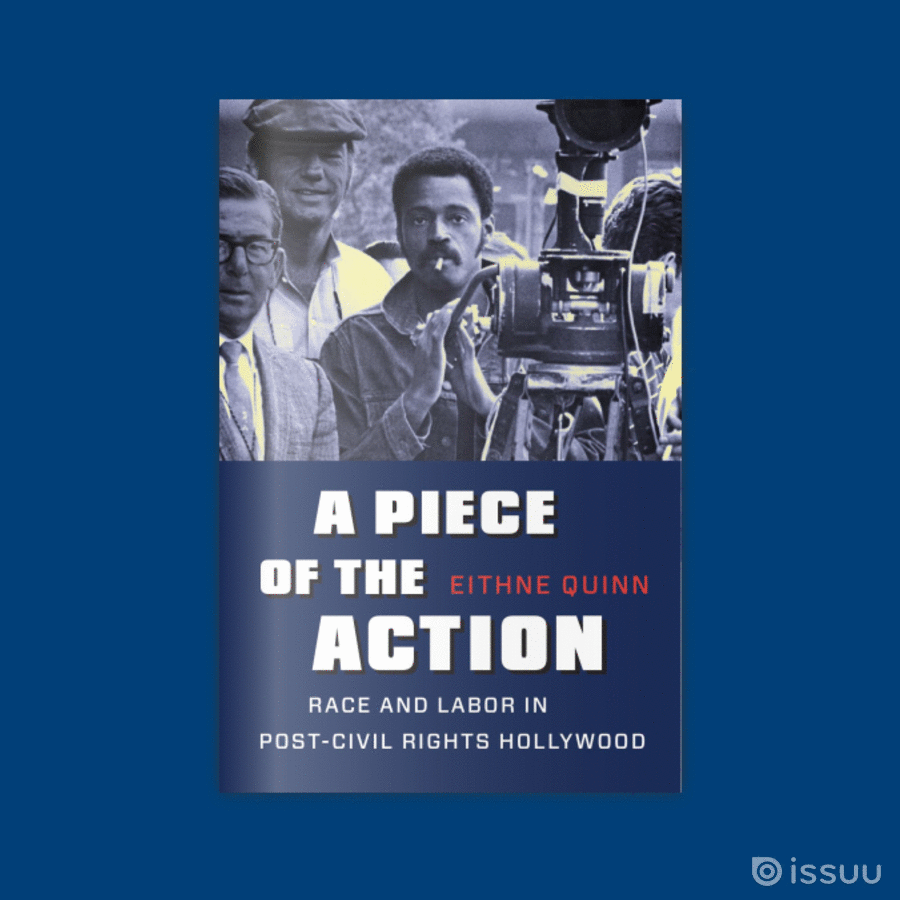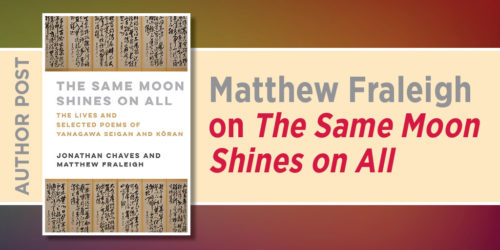Hard-To-Find Classic Documentaries: A Post from Jonathan Kahana
Jonathan Kahana is assistant professor of cinema studies at Tisch School of the Arts at New York University and author of the just-published Intelligence Work: The Politics of American Documentary.
My first post to this blog listed the “best documentary films of all time,” which is not the kind of heading I would normally use in my work. But the “work” in this case was an assignment from the in-flight magazine of American Airlines. The author of the article was particularly interested in films that flyers could imagine watching on DVD, where “imagine” can be translated as “type into the search box on Amazon.com or Netflix.” Now, I have nothing against either of these vendors. When I need a copy of Getting to Yes and want to pay only $0.06 plus shipping, Amazon is the first place I look. And when I need to watch the first ten minutes of the latest disappointment by Wes Anderson, Netflix is my source. But it is good to be reminded from time to time that there are other places to find artifacts of the history of documentary film. This post concludes with some examples of films that, as far as I know, are not available on DVD, despite being of great value as examples of documentary film art.
Nor do I have a vendetta against DVD, although there are good reasons to dislike DVD, including its notorious instability as a storage medium, which, as everyone knows, has a fraction of the shelf-life of film or tape. If you know where to look, there is a lot of good documentary cinema available on DVD these days, although – for better and worse – this situation is no more reliable than the medium itself: what’s in print today is out of print tomorrow, and vice versa. I myself recently contributed liner notes to the first DVD edition of Emile de Antonio’s Underground (1976), an under-appreciated and under-seen example of radical documentary of the 1970s. Underground wasn’t being distributed in any video format when I wrote about it for chapter three of Intelligence Work. Now, for no good commercial reason, the film has been re-issued as part of a box set produced by de Antonio’s filmic executor, Ron Mann. (You can find this set under the ponderous title Emile de Antonio: Films of the Radical Saint, a pair of terms de Antonio would no doubt have hated.) These new versions have the imprint of Home Vision, a boutique distributor that specialized in restored editions of classic films, recently swallowed up by Image Entertainment; no one seems to know whether Image will continue to re-issue the kind of documentary classics Home Vision was known for.
Another case in (counter-)point: the intrepid art-film video distributor Facets is about to release the first DVD edition of Two Laws, the legendary 1981 documentary by Alessandro Cavadini and Carolyn Strachan, in collaboration with the Borraloola Aboriginal community, about Aboriginal land claims in Australia. Two Laws is one of those films that scholars and cinephiles know by reputation and hearsay better than by first-hand experience, since it was available only as a faded 16mm print for decades; indeed, people have been writing about it for years without ever having seen it. The DVD edition is produced by Jill Godmilow, a filmmaker who is no stranger to the roller-coaster of documentary distribution.
A list of films in the state that Underground and Two Laws were in before guardian angels like Mann and Godmilow rescued them – that is, fondly remembered but rarely seen – would be plenty longer than Columbia has room for on this blog. The handful of titles I’ve compiled below is simply intended as a starting point. There are any number of documentary films about which one can ask: why aren’t these films available, given their reputation, or that of their makers? Perhaps someone will pluck these films from the mists of bootleg VHS copies, vinegar-y classroom prints, and YouTube bowdlerizations.
Moana: A Romance of the Golden Age (Robert Flaherty, 1926). Oh, it’s only the film for which the term “documentary” was invented, and the first feature film shot with panchromatic stock. And speaking of technology, what better contraption for harvesting coconuts has ever been invented than the strip of bark that Moana’s little buddy straps around his ankles to shimmy up the tree with? If you can explain to me why this film hasn’t been digitally mastered to a lavish three-disc edition of Flaherty’s documentary work (including his lovely little film The Pottery Maker, from 1925, and his bizarre remake of every New Deal documentary film, The Land, shelved by the U.S. government in 1941), I’ll let you tattoo my back with the Criterion Collection logo.
Spare Time (Humphrey Jennings, 1939). A beautiful little slice of life of ordinary Englishmen and women, engaged in various rituals of leisure and recreation – awkwardly marching, playing instruments more or less on key, drinking, dancing – Spare Time establishes a model for the British Free Cinema movement, and for the American, Canadian, and French experiments in cinéma vérité of the 1960s. Unaccountably left off of the various re-packagings of British Documentary Movement films (including the brand new BFI collection Land of Promise, which is otherwise a godsend for anyone who has suffered through screenings of the terrible MoMA print of Housing Problems).
Gente del Po (People of the Po) (Michelangelo Antonioni, 1947). A beautiful little black and white documentary about the melancholy lives of people living on the banks of the Po river, and how the river inspires them in their daily rounds. The shot of a boat chugging upstream, spewing gorgeous black smoke into the sky, makes you feel like swearing to increase your carbon footprint and never watch An Inconvenient Truth again.
Letter From Siberia (Chris Marker, 1957). True confession: I have never seen this film on anything better than a third-generation videotape. But I am in good company. Letter From Siberia is like the Velvet Underground of experimental documentary: Marker’s use of lyrical, self-reflexive narration together with biting ideological analysis (of capitalism and Stalinist communism), and a quilt of formal styles, including animation and sardonic sound-image mismatching, have influenced an entire generation of post-modern documentarists.
An American Family (Craig Gilbert, 1973). All reality TV can be traced back to this fascinating 12-part public television series about the Loud family of Santa Barbara. No one has a good explanation for why it has never been commercially available, although the oft-repeated rumor is that the rights are tied up in a dispute between the film’s producer, Craig Gilbert, and the filmmakers credited as its directors, Susan and Alan Raymond.
Attica (Cinda Firestone, 1974). The most important film about the Attica uprising of 1971, Attica was an international cause célèbre when it was released. (Michel Foucault wrote the subtitles for the French version.) The subject of a preservation effort funded by the Women’s Film Preservation Fund and the New York Public Library, the film was shown three times at the 2007 Tribeca Film Festival, and hasn’t been seen since. Keep your fingers crossed that the right distributor will make the filmmaker an offer she can’t refuse.
Handsworth Songs (Black Audio Film Collective, 1986). A landmark work about so-called “race riots” in the UK during the 1980s, Handsworth Songs – an exemplary product of the black British film collectives that emerged under and in response to Thatcher – unites the critical perspectives of British cultural studies and the aesthetic sensibilities of British punk. The subject of a famous debate between Stuart Hall and Salman Rushdie.






